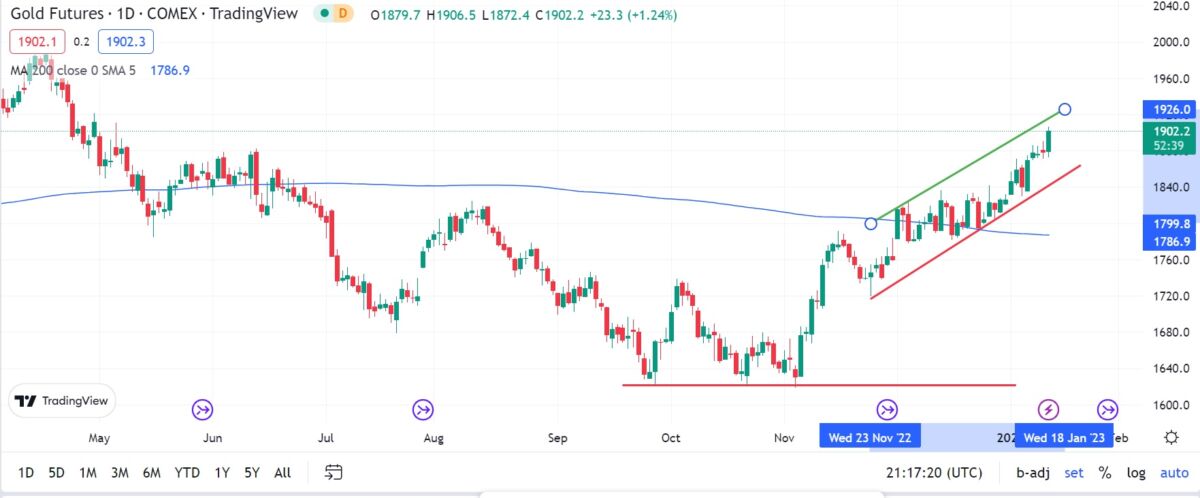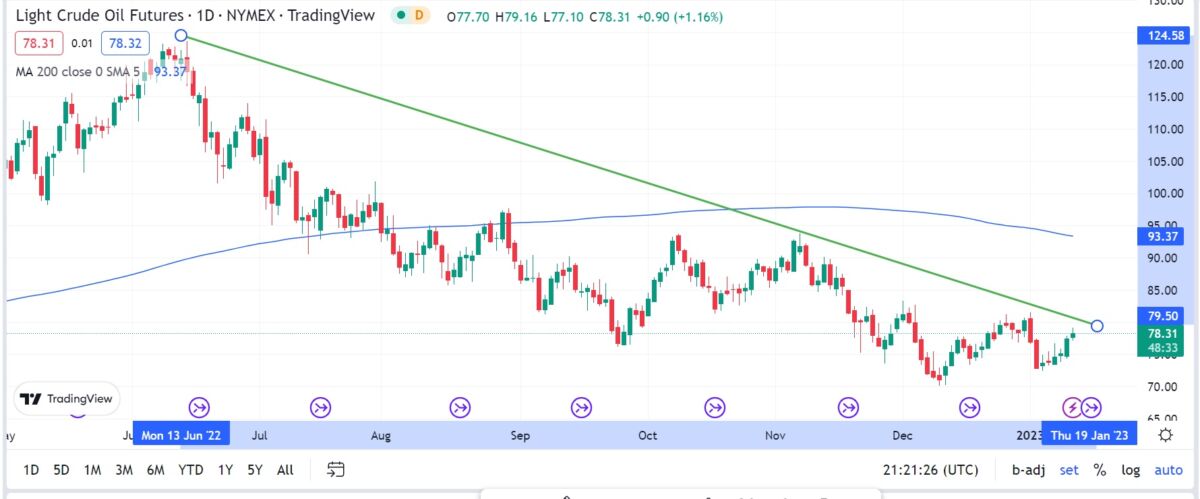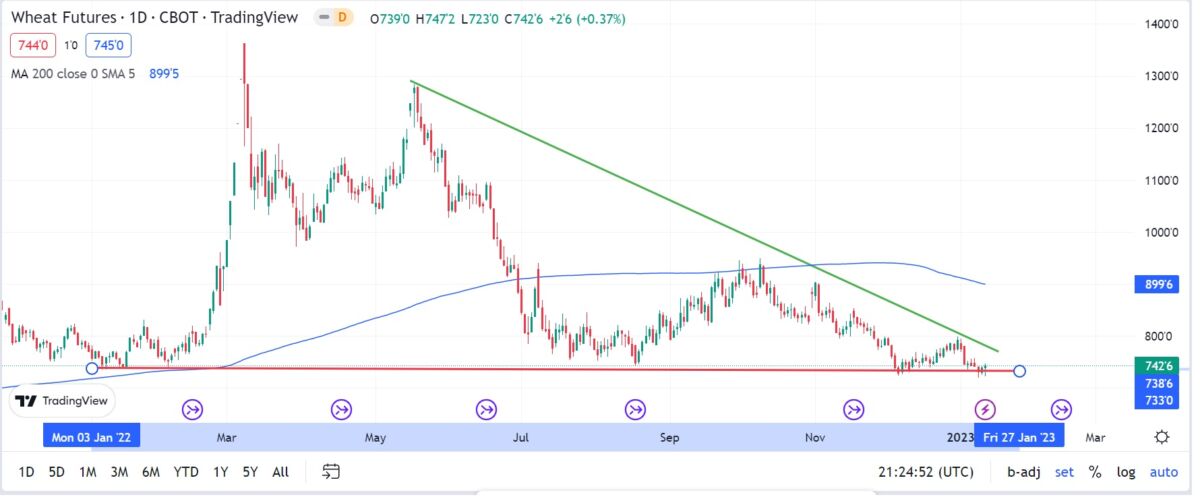Last year was volatile for most of the commodities. This year, might be the same, although the overall picture seems a bit more optimistic.
Will gold fly to new highs this year?
As the US dollar surged and US Treasury rates climbed, gold prices declined from their 2022 highs above $2,050. In addition, frequent Covid lockdowns in China, one of the world’s top buyers of precious metals, made jewellery demand difficult.
After achieving a “triple low” on September 29th, October 21st, and November 3rd, gold saw a 13% rebound through the end of the year, buoyed by lower-than-expected US CPI readings, likely leading to a Fed’s monetary policy reversal the next year.
In the first two quarters of 2023, several countries might experience a recession which would cause many central banks to pause the pace of interest rate rises and undoubtedly make gold more appealing. Gold is the single asset that every government or central bank has on its balance sheet.
More to read: TOP 5 ways you can spend your Bitcoin
Based on the World Gold Council, central banks purchased 400 tonnes of gold in the third quarter of 2022, nearly double the previous quarterly record of 241 tonnes set in 2018.
Gold prices might reach $4,000 per ounce in 2023, according to Juerg Kiener, managing director, and chief investment officer of Swiss Asia Capital. Interest rate rises and recession worries are keeping markets unpredictable, he added. Next year, the price of gold bullion might reach between $2,500 and $4,000, according to Kiener.
The worst-case scenario for gold in 2023 is a Fed that opposes dovish market expectations, lifts the terminal rate above expectations, and does not loosen monetary policy in the event of a recession. In that scenario, gold might remain trapped below the psychological level of $2,000 or stage another decline toward $1,800.

Gold futures 1D chart, source: tradingview.com, author’s analysis
Oil to rally again?
There are a few factors to bear in mind when trying to predict oil prices in 2023. First, the United States has stated that it would begin restocking its Strategic Petroleum Reserves (SPR) at a price between $68 and $72, indicating that there may be an additional factor for support in the near future.
Second, despite the weak response to China’s reopening so far, the danger of recession is likely already discounted in the price of crude. Thus, there might be room for optimism in the first quarter of 2023 if economic data demonstrate greater resilience than anticipated.
Moreover, it is believed that the US economy would decelerate, and a slowdown in the European and British economies will also probably reduce oil consumption. According to OPEC’s projections, China and India will likely see the greatest demand growth. In 2023, these economies are anticipated to expand between 5% – 6%.
You may also like: GBP/USD expects US inflation data above key supports
At the same time, the United States is forecasted to dominate supply growth in the Americas, while Russian output (affected by increasing sanctions and price caps) is projected to decrease. It is estimated that non-OPEC supply will grow by around 1.5 million barrels per day, while the OPEC output is predicted to grow little in 2023, by around 0.05 million barrels per day.
Oil supply growth in 2023 is estimated to fall short of demand growth, indicating a possible uptrend in oil prices. Escalating geopolitical tensions (continuous and still looming) and the likelihood of a faster-than-anticipated economic rebound in China are the key positive ‘risks’ for oil prices.
The markets have already priced in a decreasing growth rate for the global economy, which oil prices partially reflect. There are still downside risks if sluggish growth in the US turns into a recession and if what looks to be a likely recession in parts of Europe becomes extended.

Oil futures 1D chart, source: tradingview.com, author’s analysis
Wheat with a bullish outlook also
Following a turbulent year, wheat ended 2022 at around $7.76 per bushel, a 2% increase from the beginning of the year. Russia’s invasion of Ukraine and the Western sanctions created huge price swings throughout the year, although an export agreement that permitted grain exports from Black Sea ports reduced market volatility.
Nevertheless, the fighting is ongoing, and the agreement safeguarding exports remain vulnerable until the conclusion of the war. An escalation on either side might drive up prices, especially if the Black Sea export corridor is endangered.
Also interesting: FX outlook for 2023: where are the main currency pairs heading?
Wheat prices are also influenced by the weather. For the 2022/23 season, the USDA anticipates a price of $9.10 per bushel. Current prices are around $7.43. While the USDA forecasts an increase in bushels per acre to 46.5 million from 44.3 million, the total harvested area is anticipated to decrease to 35.5 million from 37.1 million the previous year. This decreases the total crop supply, which helps to explain the price projection.
According to the USDA, 64% of the US wheat region is now affected by drought. If this figure remains high till March, when the initial planting is normally conducted, it might mean difficulty for agricultural output and drive up prices.

Wheat futures 1D chart, source: tradingview.com, author’s analysis
Final thoughts
It appears that the main commodities are poised to resume their uptrends in 2023, as the less hawkish Fed, the war in Ukraine, and high inflation support rising prices.










Comments
Post has no comment yet.